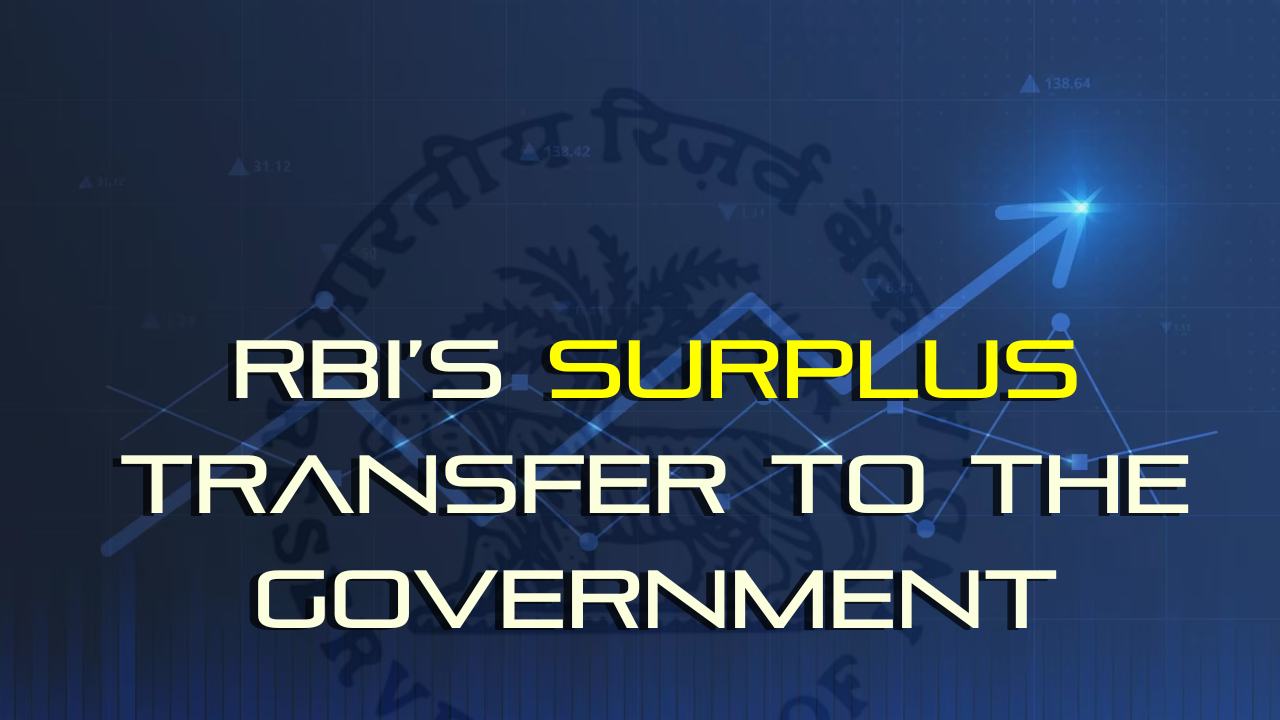Font size:
Print
RBI’s surplus transfer to the Government
Context : RBI announced last month that it is transferring a sizable dividend to the government, significantly more than what was anticipated. Additionally, the contingency risk buffer has been raised to 6.5% from the previous 6%.
RBI surplus and Transfer of Surplus
- Surplus is the net income obtained after subtracting total expenditures from total income. From this surplus, provisions are made to address monetary and financial stability risks, as well as credit and operational risks.
- Transfer of Surplus: The Reserve Bank of India (RBI) transfers its surplus to the government in accordance with Section 47 of the Reserve Bank of India Act, 1934.
- Determination of Surplus :
- Is Done on the basis of the Economic Capital Framework (ECF) recommended by the governor Bimal Jalan committee.
- This committee advised the RBI to maintain a Contingent Risk Buffer (CRB) between 5.5% and 6.5% of its balance sheet

Reasons for the increase in RBI’s surplus:
- Higher Income from Foreign Currency Assets: The RBI’s investments in foreign assets such as bonds, treasury bills, and central bank deposits have generated higher returns due to favourable global market conditions.
- RBI sold securities worth $153 bn in the forex market in FY 24.
- RBI has invested $240.6 billion in US Treasuries.
- Increased Earnings from Domestic Securities
- Exchange Rate Gains: Depreciation of the Indian rupee can lead to revaluation gains on the RBI’s foreign currency assets, boosting overall income.
- Efficient Management of Borrowings for central and state governments can lead to reduced costs and increased income from associated activities.
- Rise in Commission and Fees and Reduction in Expenditure
- Short-term Lending: Increased income from short-term lending operations, such as lending to banks and other financial institutions, can enhance the surplus.
Benefits for the government from the transfer
- Increased Capital Expenditure (CAPEX)– The surplus transfer provides fiscal stimulus to the government to increase its allocations to roads, railways, and defence projects.
- However, non sustainable capex (not essential for growth) should be avoided.Ex. Using Rs 1.6 lakh crore to revitalise telecom MTNL and BSNL, is not critical.
- Reduced borrowing and Fiscal Consolidation– The stimulus transfer ensures fiscal deficit reduction remains in sync with the committed target of 4.5% by FY26(as per FRBM act 2003 amendment) as it provides a fiscal space of 0.3%of GDP.
- Covering the disinvestment target– The Govt has set an ambitious divestment target of ₹50,000 crore for FY25.The surplus provides a safety revenue cover to the government in case of any potential miss this year.
- Boost to Bond Markets: Lower borrowing could lead to softer G-Sec yields, reducing the government’s borrowing costs, as bond yields and prices move inversely.
Way Forward
- Increasing Tax-to-GDP Ratio: The government must minimise dependence on central bank transfers and public-sector dividends, focusing on effective fiscal management to raise the tax-to-GDP ratio.
- GST Rate Rationalisation: Urgent steps are required to simplify GST rates and slabs via the GST Council, aiming to enhance government tax revenues.






